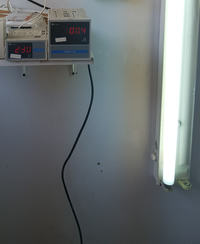electronicman26
Full Member level 2
Hi
I want to compare two kinds of lamps, 1- a 20w LED t8 linear lamp and 2-a 40w t8 fluorescent
both work with AC power supply, I calculate the current of each, ampere meter shows 400mA for fluorescent and a clamp ampere meter shows 70mA for LED, both supply voltage be equal (voltmeter shows 230V), now, how can I write the power formulation for this two types of lamp?
Regards
I want to compare two kinds of lamps, 1- a 20w LED t8 linear lamp and 2-a 40w t8 fluorescent
both work with AC power supply, I calculate the current of each, ampere meter shows 400mA for fluorescent and a clamp ampere meter shows 70mA for LED, both supply voltage be equal (voltmeter shows 230V), now, how can I write the power formulation for this two types of lamp?
Regards

